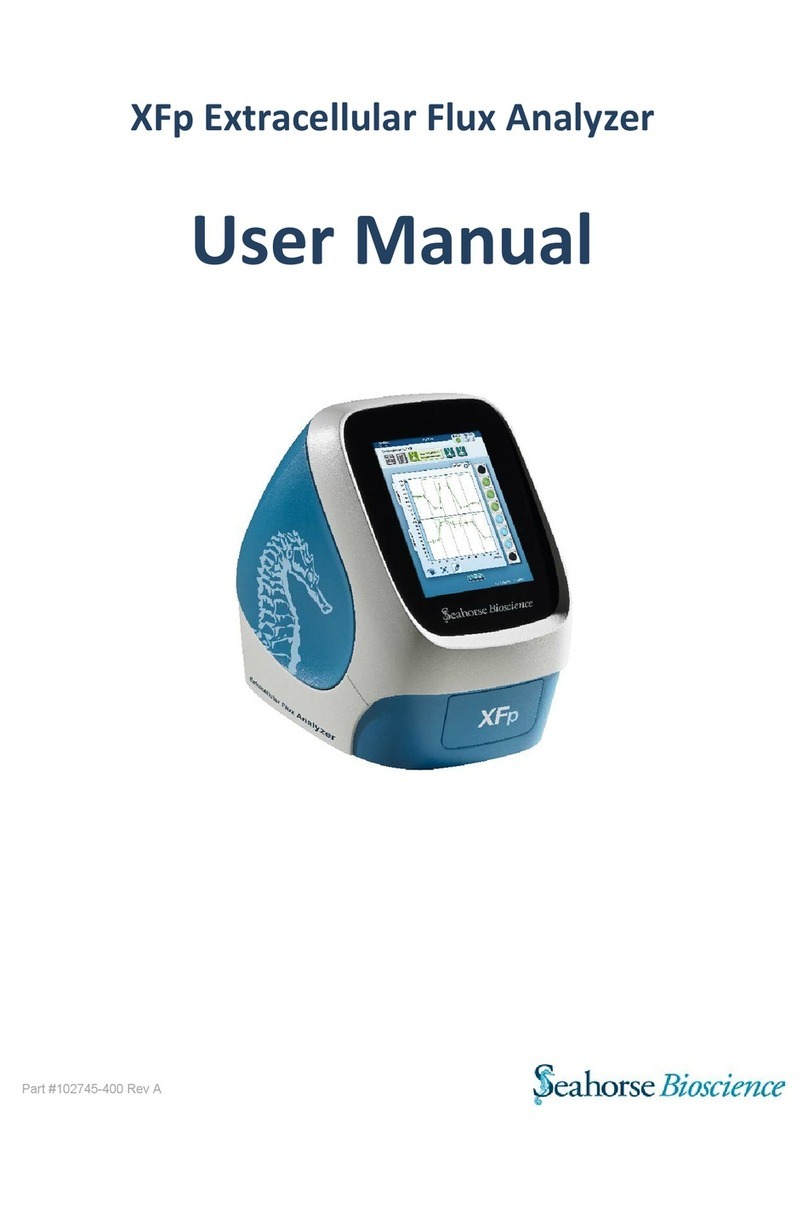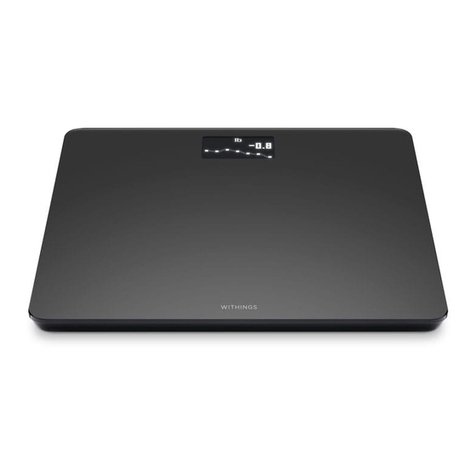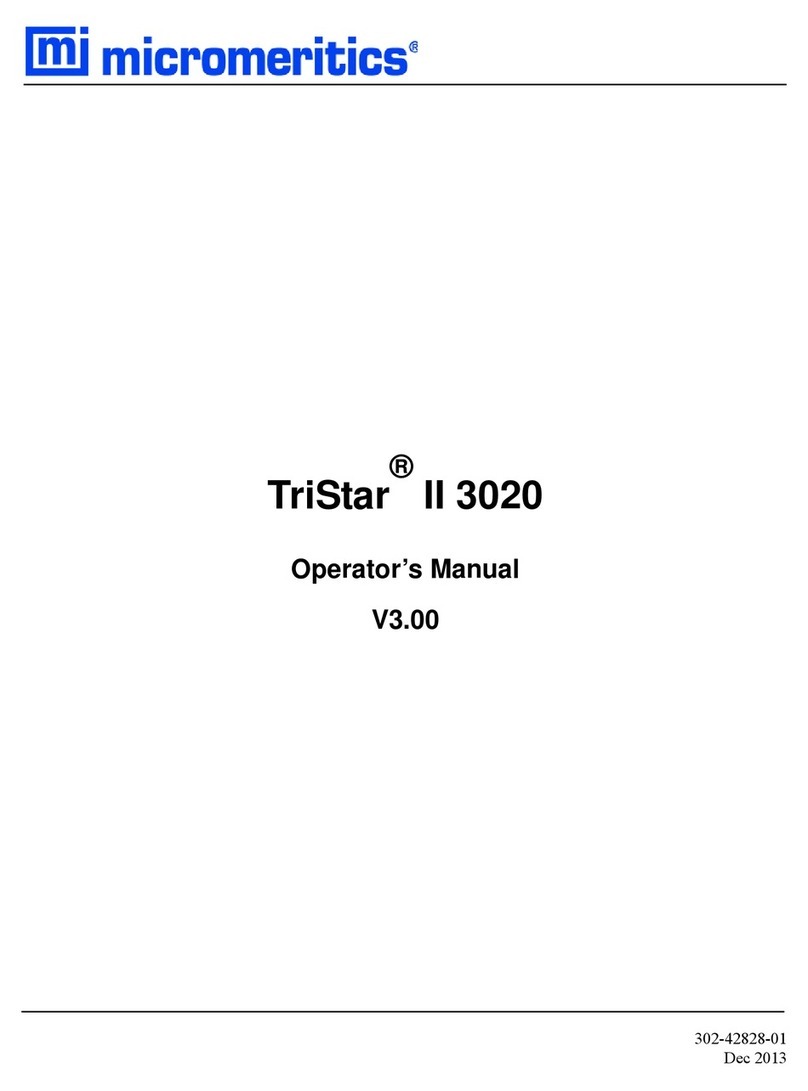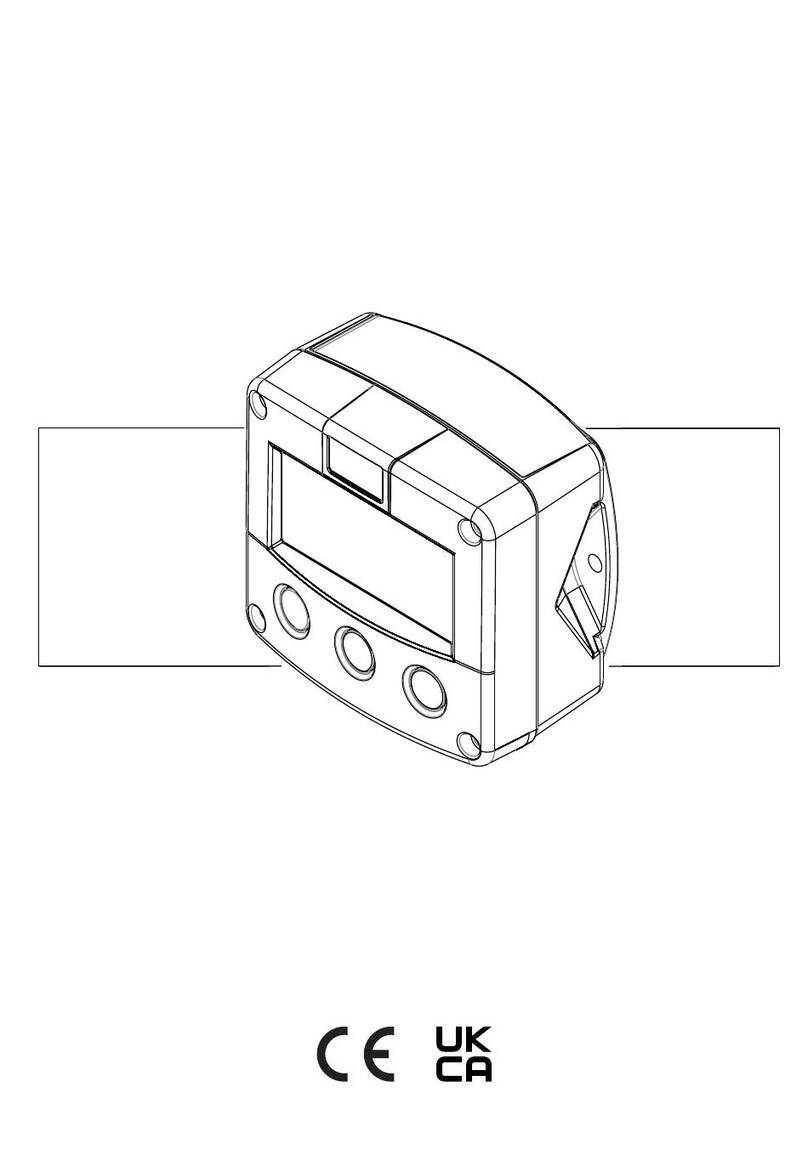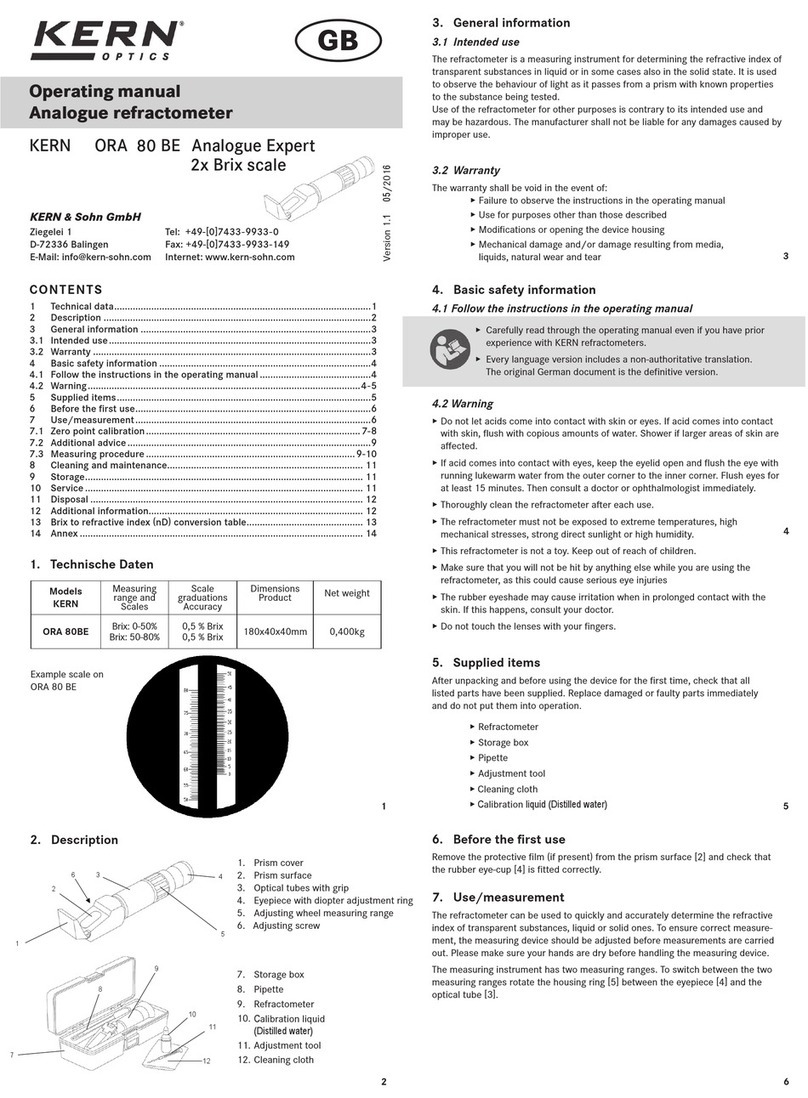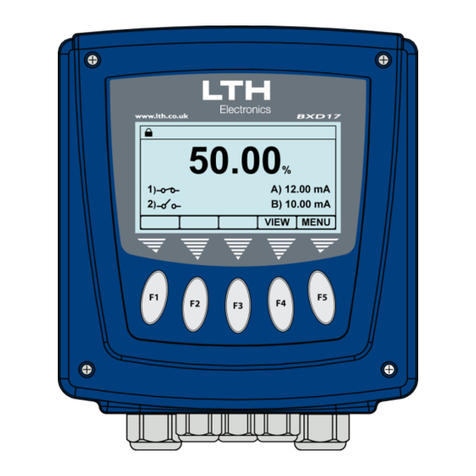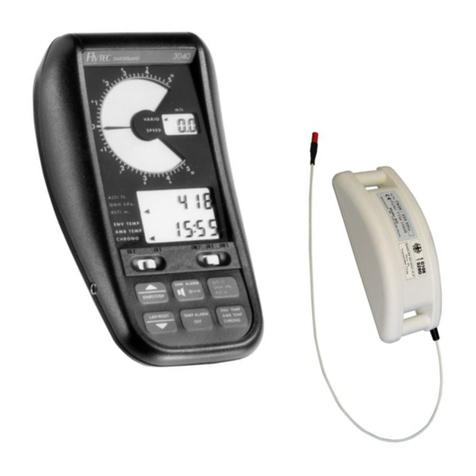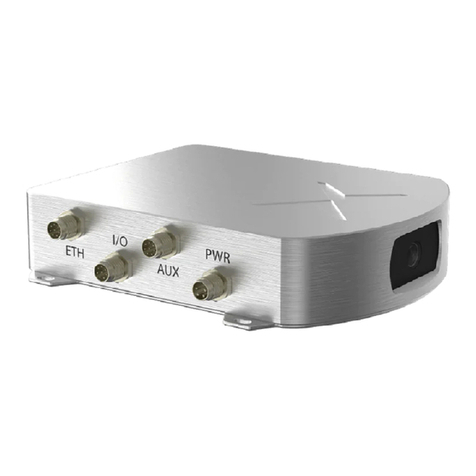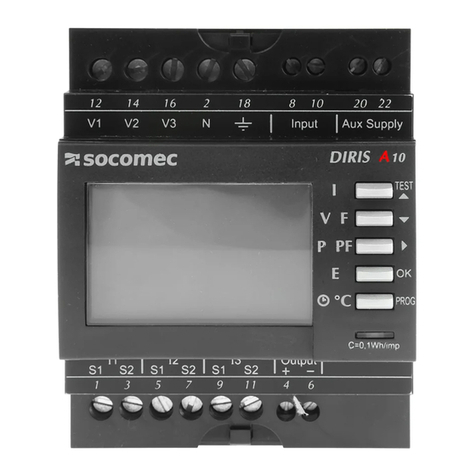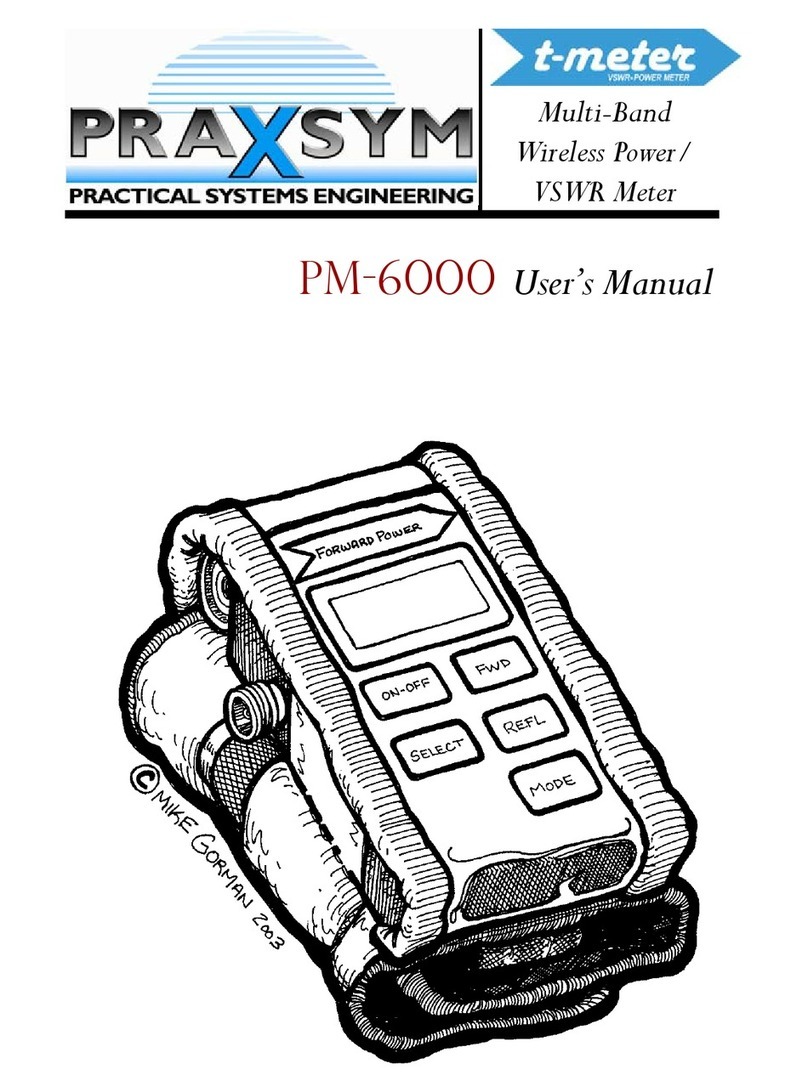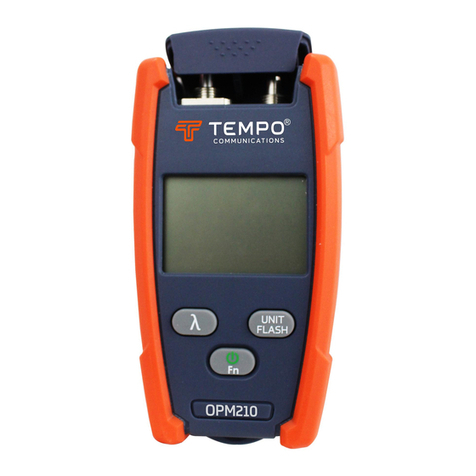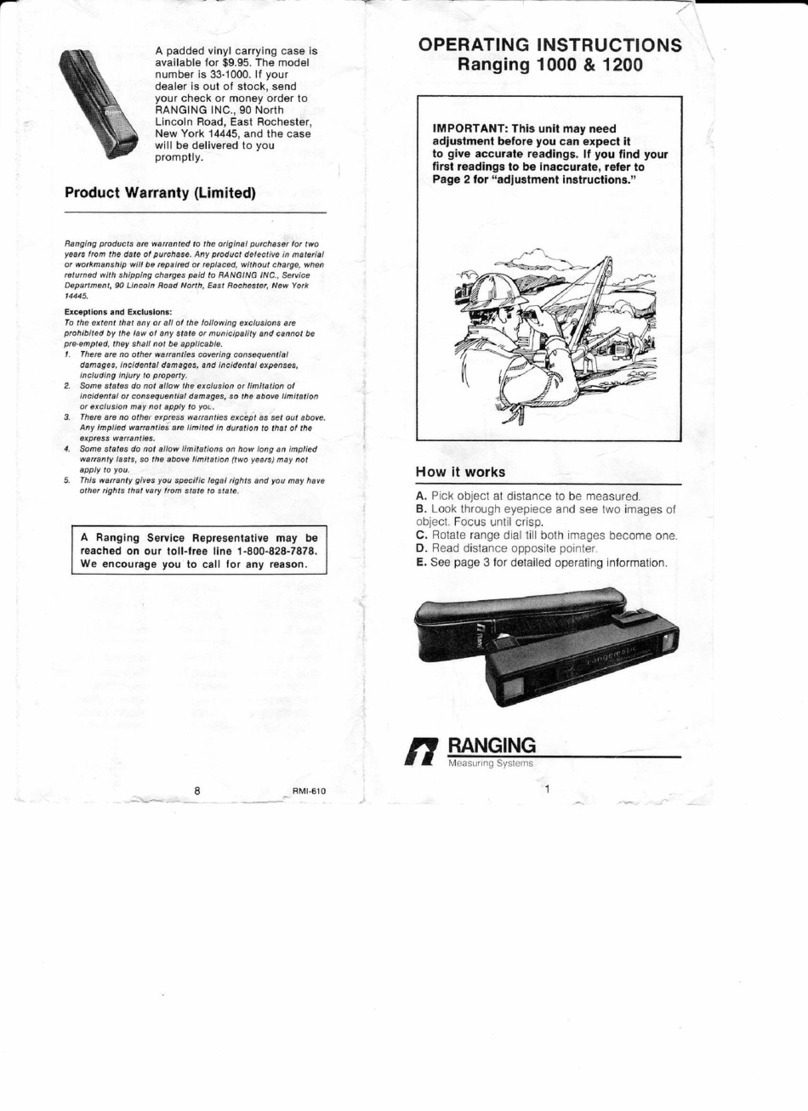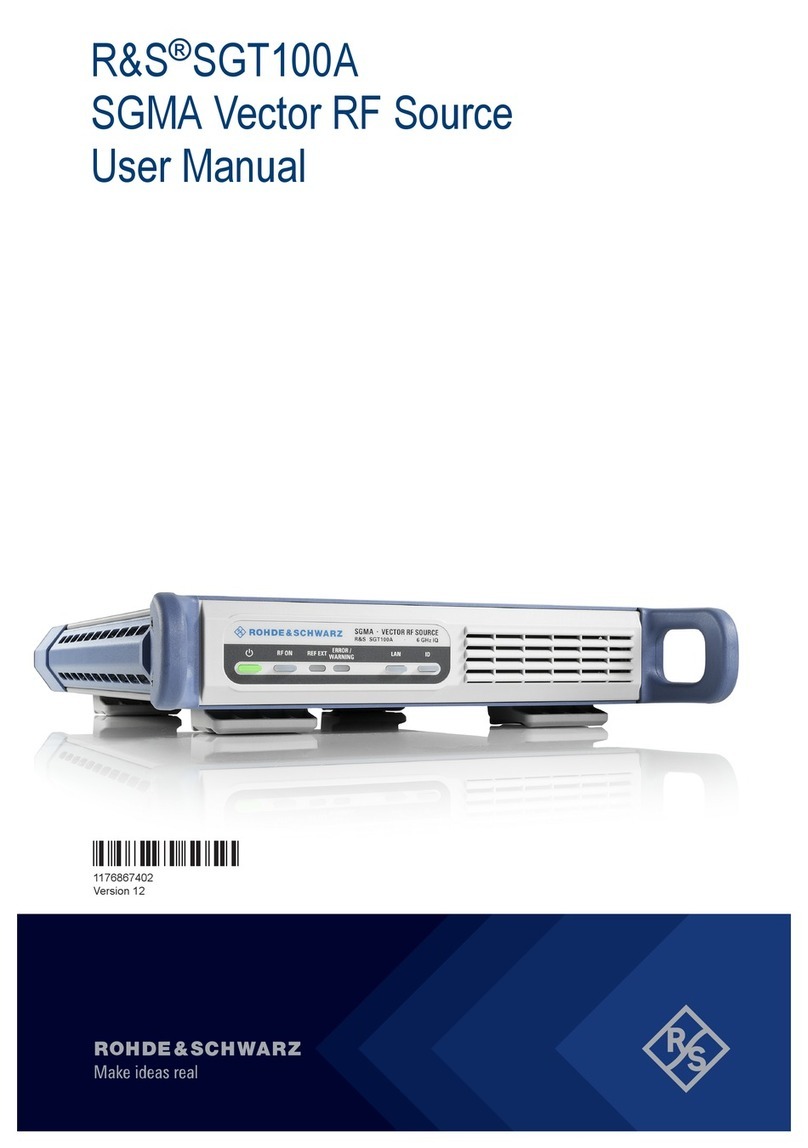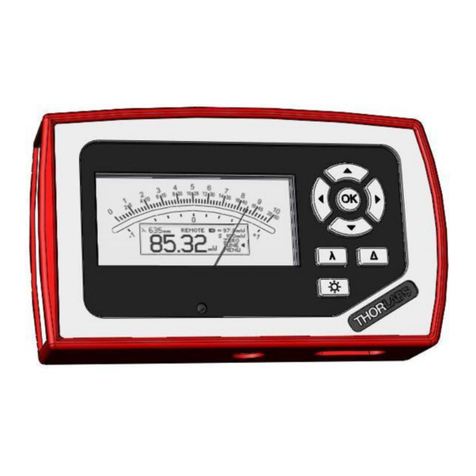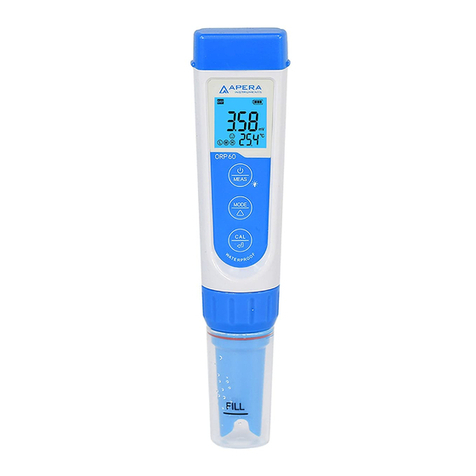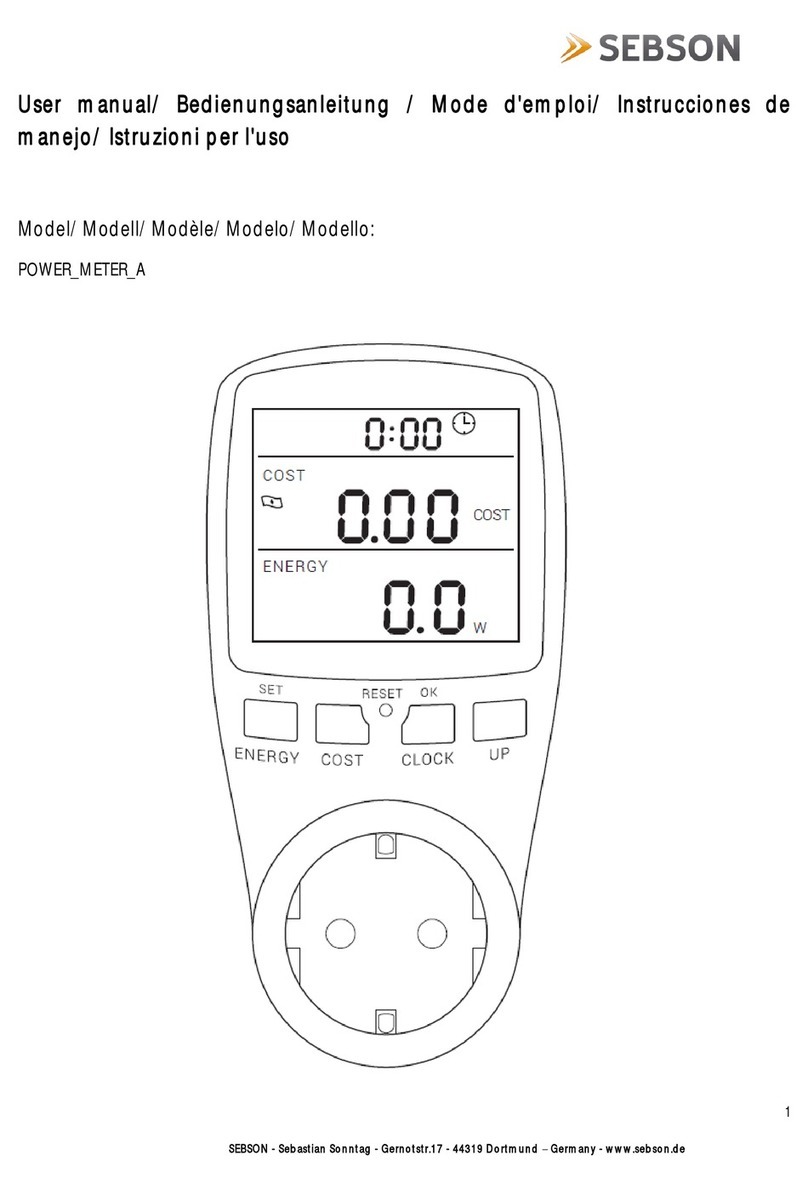Seahorse XF24 Installation guide

XF24 Training Manual
1

support@seahorsebio.com • +1-978-671-1600 • www.seahorsebio.com Boston • Copenhagen • Shanghai
XF24 Analyzer Consumables
XF Stress Test Kits & Reagents
Part # Description # of
Microplates
103015-100 XF Cell Mito Stress Test Kit 6
103020-100 XF Glycolysis Stress Test Kit 6
102504-100 XF Plasma Membrane Permeabilizer 6
102720-100 XF Palmitate-BSA FAO Substrate 3
XF FluxPaks
Part # Description # of Cartridges
100850-001 XF24 FluxPak 18
100867-100 XF24 FluxPak mini 6
101174-100 XF24 Islet Capture FluxPak 6
XF Microplates
Part # Description # of
Microplates
100777-004 XF24 V7 PS Cell Culture Microplates 10
101122-100 XF24 Islet Capture Microplates 6
XF Media & More
Part # Description Quantity
100840-000 XF Calibrant 500ml bottle
102353-100 XF Base Medium 2 x 1L bottle
101135-100 Capture Screen Insert Tool 1 reusable device
XF24 Port Layout
XF24 Analyzer
Quick Info
D
C
B
A
Instrument Serial #
CONTACT SEAHORSE BIOSCIENCE
Need to order consumables?
Go to: www.seahorsebio.com/order
Need technical support?
Go to: www.seahorsebio.com/techsupport

support@seahorsebio.com • +1-978-671-1600 • www.seahorsebio.com Boston • Copenhagen • Shanghai
XF MICR OP L ATE
Recommended assay volume: 500-1,000 µL per well.
When performing the medium exchange, ensure that the nal volume of XF Assay Medium allows
for injection volumes. The nal volume in the wells during the assay must not exceed 1,000 µL.
XF INJECTION PORTS
Recommended loading volume: 75 µL
(Do not exceed 95 µL due to the risk of contaminating the instrument)
Ensure that all injection ports used in the assay protocol are loaded with an equal volume to prevent
failures. (i.e., if injecting compound through ports “A” and “B”, all “A” and “B” ports must be loaded
with either compound or assay medium).
EXAMPLE VOLUMES FOR AN XF ASSAY
Number of compound injec-
tions in assay 1234
XF Assay Medium in wells after
medium exchange 525-900 µL 525-825 µL 525-750 µL 525-675 µL
Injection Port A 75 µL 75 µL 75 µL 75 µL
Injection Port B 075 µL 75 µL 75 µL
Injection Port C 0 0 75 µL 75 µL
Injection Port D 00075 µL
Total volume per well 600-1,000 µL
XF24 Recommended Assay Volumes
Corporate Headquarters
Seahorse Bioscience Inc.
16 Esquire Road
North Billerica, MA 01862 US
Phone: +1-978-671-1600 •800-671-0633
www.seahorsebio.com
European Headquarters
Seahorse Bioscience Europe
Symbion Science Park
Fruebjergvej 3
2100 Copenhagen
Denmark
Asia-Pacic Headquarters
Seahorse Bioscience Asia
199 Guo Shou Jing Road
Suite 207
Pudong, Shanghai 201203 CN
Cutaway graphic of a single
probe and well

4
Pre-
t
r
aining
How does a Seahorse XF Analyzer work?
Take 15 minutes to watch these six videos and you’ll have a good
foundation
for
understanding
XF Assays.
Introductory videos available at
http://www.seahorsebio.com/learning/videos.php
a. Energy Pathways (2:06 minutes)
b. Transient Microchamber (2:12 minutes)
c. Drug Injection Ports (1:51 minutes)
d. Validation 1 (2:23 minutes)
e. Validation 2 (1:19 minutes)
f. Measure Glycolysis (2:58 minutes)
Download software to your laptop or desktop:
http://www.seahorsebio.com/resources/sitesearch/search.php?q=software

5
Basic Procedure
XF Assay Roadmap
After Your
Assay
Data
interpretation
After Your
Assay
Next
experiments
Planning Your Assay
•
Obtain materials
•
Reconstitute
kits
•
Review media
requirements
Day Prior to Assay
•
Hydrate
cartridge
•
Seed cells
Day of Assay
Prepare
and
run
assay
•
Prepare assay
medium
•
Wash cells
•
Prepare assay
compounds
•
Load cartridge
with compounds
•
Design/load
instrument
protocol
•
Run assay

Basic Procedure
6
Contact Seahorse Technical Support: www.seahorsebio.com/techsupport
Sample XF Assay Workflow Diagram
Seed cells and
incubate overnight
in growth medium Hydrate sensor
cartridge overnight
Day Before XF
Assay
Day of XF
Assay
Change medium
t
o
bi
car
bona
te
-f
ree
low-buff
ered
assay
me
diu
m
Add compounds
to reagent ports
XF
Ass
a
y
Calibrate
sensors

Basic Procedure
7
XF24 Analyzer Materials List
Materials required or recommended for a successful XF24 assay.
Required
The following are the materials required to run an XF24 assay.
•
XF24 Analyzer with Controller
•
Non-CO2 Incubator (37°C) or XF Prep Station
•
XF24 FluxPak (Part # 100850-001 ) or XF24 FluxPak mini (Part # 100867-100)
•
pH Meter
•
Inverted Phase Contrast Microscope
•
Pipette
•
P20 and P1000 Pipette tips
•
Low-buffered non-bicarbonated Medium for Assay
(e.g. DMEM, KHB, RPMI without bicarbonate)
Recommended
The following are materials recommended to help you achieve optimal results. These include ensuring
optimal instrument functioning, compound reconstitution, and assay experience.
•
Uninterrupted power source
•
Internet access
•
Balance
•
Stir plate
•
Cell counter/Hemacytometer
•
Water bath set at 37°C
•
Micro centrifuge
•
Touch vortex
•
Centrifuge with adaptors for cell culture plates
•
Pipetting Reservoirs
•
15 and 50 mL conical tubes
•
Sterile filter bottles (0.22 uM filter) and cap

Basic Procedure
8
Available Kits and Reagents
The following are materials offered by Seahorse Bioscience to assist you in designing assays to examine
cellular metabolism. Each kit and reagent is designed to address your specific experimental question. If
you have any questions about which kits and reagents may be appropriate for your experiments, please
visit our website http://www.seahorsebio.com/ or contact Technical
Support http://www.seahorsebio.com/support/tech-support.php.
•
XF Prep Station (Part # 100900-100)
•
XF Medium (requires storage at 4°C)
o XF Base Medium (Part # 102353-100)
o XF Assay medium (Part # 102365-100)
•
XF Stress Test Kits
o XF Cell Mito Stress Test Kit (Part # 103015-100)
o XF Glycolysis Stress Test Kit (Part # 103020-100)
•
XF Reagents and Substrates
o XF Plasma Membrane Permeabilizer (Part # 102504-100)
o XF Palmitate-BSA FAO Substrate (Part # 102720-100)

Basic Procedure
11
Seeding cells in an XFe24 or XF24 Cell Culture
Microplate
XF assays are performed in Seahorse 24-well XF Cell Culture
Microplates in conjunction with an XF24 sensor cartridge. Each
microplate is formatted in a typical 24-well design, as shown. The
seeding surface of each well is similar to that of a typical 96-well
(0.275 cm2). This procedure describes recommendations for
seeding adherent cell types for use with the XF24 Analyzer.
A two-step seeding process is recommended when seeding XF24 cell culture microplates.
The two-step process produces a consistent and even monolayer of cells.
1. Harvest and re-suspend the cells to desired final concentration to seed in 100 μL of growth
medium. Optimal cell seeding numbers vary widely, though are typically between 10,000 –
80,000 cells per well and must be determined empirically (see Optimization Protocols).
2. Seed 100 μL of cell suspension per well (as shown in figure below); do not seed cells in
background correction wells (A1, B4, C3, D6). Be sure to put medium only (no cells) in the
background correction wells. Allow plate to rest at room temperature in the tissue culture
hood for one hour. This will promote even cell distribution and reduce edge effects.
3. Place plate in a standard cell culture incubator to allow cells to adhere. This generally takes
approximately 1 hour for strongly adherent cells, but may take 5-6 hours for less adherent cell
types. Monitor adherence using a microscope.
4. After cells have adhered, add 150 μl of growth medium to each well (see figure below),
bringing the total volume of medium in the well to 250 μl. When adding medium to the wells,
add it slowly to the sides as not to disturb the newly attached cells.
5. Allow the cells to grow overnight in a cell culture incubator. Monitor growth and health of
cells using a microscope.
Hint: Hold the pipette tip at an
angle and rest the tip just
below the circular rim at the
top of the well for best
technique and most
homogeneous
cell layer.

Basic Procedure
12
Preparation of Assay Media for Use in XF Assays
This basic procedure details the preparation of assay media for use with
(1) XF Cell Mito Stress Test Kit, and (2) XF Glycolysis Stress Test Kit
Seahorse recommends the use non-buffered assay medium for XF assays to ensure accurate, functional
measurements of metabolic phenotypes in an ambient environment. The optimal assay media for the
XF Cell Mito Stress Test and the XF Glycolysis Stress Test are different. Both can be prepared starting
with the XF Base Medium and adding different substrates as determined by your cell model. Substrate
requirements are cell type specific and may need to be determined empirically. For the XF Cell Mito
Stress Test, assay medium with user-added glucose, sodium pyruvate and glutamine is recommended
(see 1). For the XF Glycolysis Stress Test, assay medium with user-added glutamine is recommended
(see 2).
1. XF Cell Mito Stress Test Assay Medium
For one tissue culture plate: if rinsing manually, 100 mL of assay medium is sufficient; if rinsing using
the XF Prep Station 200 mL of assay medium is sufficient.
Materials
Source
Cat #
XF Base Medium
Seahorse Bioscience
102353-100
Glucose
Sigma
G7528
Sodium Pyruvate (powder)
Sigma
P5280
Sodium Pyruvate (liquid, 100 mM)
Sigma
S8636
L-Glutamine
(200 mM)
Life Technologies
25030-081
0.2 µM Sterile Filter
pH Meter
1 N NaOH
Method
1. Warm 100 mL XF Base Medium to 37°C.
2. Add glucose for the desired final concentration using the following table.

Basic Procedure
13
Final glucose concentration
Grams of glucose per 100 mL
2.5
mM
0.045
g
5.5
mM
0.10
g
10
mM
0.18
g
25
mM
0.45
g
3. Add the desired amount of sodium pyruvate using powder or liquid using one of the following
tables.
Addition of sodium pyruvate from powder:
Final pyruvate concentration
Grams of pyruvate per 100 mL
0.5
mM
0.0055
g
1.0
mM
0.011
g
2.0
mM
0.022
g
5.0
mM
0.055
g
10.0
mM
0.110
g
Addition of sodium pyruvate from 100 mM liquid:
Final pyruvate concentration
mL of pyruvate solution per 100 mL
0.5
mM
0.5
mL
1.0
mM
1
mL
2.0
mM
2
mL
4. Add the desired amount of L-glutamine using the following table.
Addition of L-glutamine from 200 mM liquid:
Final glutamine concentration
mL of glutamine solution per 100 mL
1
mM
0.5
mL
2
mM
1
mL
4
mM
2
mL
5. Adjust pH to 7.4 using 1 N NaOH. Note: medium will respond quickly to NaOH, use small volumes
and add slowly to adjust pH.
6. Filter Sterilize with a 0.2 µM filter.
7. Keep the XF Cell Mito Stress Test Assay Medium at 37°C until ready to use.

Basic Procedure
14
2. XF Glycolysis Stress Test Assay Medium
For one tissue culture plate: if rinsing manually, 100 mL of assay medium is sufficient; if rinsing using
the XF Prep Station 200 mL of assay medium is sufficient.
Materials
Source
Cat #
XF Base Medium
Seahorse Bioscience
102353-100
L-Glutamine
(200 mM)
Life Technologies
25030-081
0.2 µM Sterile Filter
pH Meter
1N NaOH
Method
1. Warm 100 mL of XF Base Medium to 37°C.
2. Add the desired amount of L-glutamine according to table below.
Final glutamine concentration
mL of L-glutamine solution per 100 mL
1
mM
0.5
mL
2
mM
1
mL
4
mM
2
mL
6. Adjust the pH to 7.35 ± 0.05 using 1 N NaOH. Note: medium will respond quickly to NaOH, use
small volumes and add slowly to adjust pH.
8. Filter sterilize with a 0.2 µM filter.
9. Keep the XF Glycolysis Stress Test Assay Medium at 37°C until ready to use.

Basic Procedure
15
Washing Cells in XF24 Cell Culture
Microplates
This basic procedure describes replacing the growth medium with assay medium for adherent cells
grown in XF24 cell culture microplates prior to being assayed using an XF24 Analyzer.
1. Warm the pre-made Assay Medium to 37oC.
(See basic procedure - Assay Media Preparation).
2. Retrieve your cell plate from the CO2 incubator.
3. Look at cells under the microscope to:
a. Confirm cell health, morphology, seeding uniformity and purity (no contamination).
b. Ensure cells are adhered, and no gaps are present.
c. Make sure no cells were plated in the background correction wells.
4. Wash cells with Assay Medium
a. Remove all but 50 µL of the culture medium from each well.
b. Rinse cells two times with 1 mL of assay medium.
c. Add the desire final volume, for example, 450 µL of assay medium to each well for a final
volume of 500 μL/well
5. Look at cells under the microscope to ensure that cells were not washed away.
6. Place the plate in a 37°C incubator without CO2 for one hour prior to the assay.

Basic Procedure
20
Loading the XF24 Sensor Cartridge with Compounds
The XF24 Sensor Cartridge Loading Guide will help ensure consistent and accurate cartridge loading for assays on
the XF24
Extracellular
Flux Analyzer. This procedure is intended for use following cartridge hydration.
Recommended
injection volume is 75 µL. See
Recommended
Volumes for XF24 and XFe24 Assays.
Requirements for Proper Compound Loading:
1. Each series of ports must contain the same volume (For example, all A ports must be filled with the same
volume; all B ports must be filled with the same volume, etc.).
2. All wells, including Background Correction or blank wells, need to have vehicle or compound loaded in the
port being used to ensure proper injection in all wells.
3. All
compounds
should be diluted with the
appropriate
aqueous vehicle (such as XF Base Medium) before
being loaded into the sensor cartridge. Refer to Compound Preparation guide.
4. The hydrated XF sensor cartridge must remain in the utility plate and be placed flat on the work surface
throughout the loading procedure. Do not lift or angle the
plate/cartridge
away from the work surface
while loading.
5. Handle the XF24 cartridge very carefully. Hold the base of the utility plate when
transporting
a
cartridge. Do not hold the cartridge and utility plate between your thumb and fingers. Avoid
traveling
with the cartridge. To mitigate the accidental discharge of compounds prior to starting the
assay, the best practice is to hydrate the cartridge and load the injection ports adjacent to the XF24
Analyzer.
Loading the Sensor Cartridge with Compounds:
Step 1 –Pre-warm injection compounds to 37oC.
NOTE: It is strongly recommended that injected
compounds
be at pH 7.35-7.4 at 37°C
prior to loading into the injection ports.
Step 2 –Orient the XF Assay Cartridge:
When preparing for compound injections, you must
identify the injection ports. The XF24 Sensor Cartridge
has four injection ports, labeled D, C, B, and A as shown
in the image to the left. Orient the XF24 Sensor Cartridge
with the bar code on the right. The triangular notch will
be on the bottom left corner.
Triangular notch Bar Code

Basic Procedure
21
Step 3 –Load the XF24 Cartridge
Using a p200 or a multichannel pipette, load 75 µL of injection compound into the
desired injection ports according to your plate
map/groupings
using the following
technique:
1. Hold the tips at a 45° angle
2. Place the tips halfway into the injection ports with the bevel of the tip against the
opposite wall of the injection port
a. Do NOT insert the tips completely to the bottom of the injection ports as
this
may cause compound leakage through the port.
3. Gently and completely load the
compounds
into the ports via a single stream
a. NOTE: It is important to avoid air bubbles
b. NOTE: Do NOT tap any portion of the cartridge in an attempt to alleviate
air
bubbles. This may cause compound leakage through the injection
port.
Step 4 –Inspect Injection Port
Inspect complete loading of each injection port by bringing the cartridge to eye-level
while maintaining the base of the cartridge on a flat surface. The liquid should be all
the way down at the bottom of the injection ports. Record the position of any ports
which appear uneven for later data analysis.
Recommended
Pipettes and Tips:
1. Biohit Proline Plus (10-100 µL) OR BioPette Plus (20-200 µL) with:
a. Biohit Optifit Tip (catalog # 790351) or
b. VWR Ultrafine Flextop Tips (Catalog # 37001-532 (USA); 7320504 (EU)) or
c. Rainin 250 µL Tips (Catalog # RT-205)
2. Viaflo 300 µL (Dispense volume set to 75 µL, Dispense rate set to 8) with:
a. Integra 300 µL Tips (catalog # 4433)

Operation of the Prep Station for Medium Exchange
The Prep Station can be used to change the cultured medium to an assay medium before an XF
experiment. After the medium exchange, the dispensed and aspiration probes are automatically
washed using the DI water and cleaning fluid bottles from the back of the prep station. The tubing from
the medium bottle must be manually cleaned by the user.
Materials:
Prep Station
70% ethanol (500 mL)
DI water (500 mL)
XF96 or XF24 tissue cultured plate containing adhered cells
150 mL Assay Medium (Make sure medium is warmed to 37oC in water bath)
3 –50 mL conical tubes
Using the Prep Station to do Medium Exchange
1. Check to make sure the water bottle and clean bottle are filled with DI water and 70% ethanol
respectively. If the yellow light in front of the prep station is turned on, it indicates that the
volume is too low. Fill the bottle with the correct solution.
Indicator
Water Bottle
Clean Bottle
2. Check to make sure the waste bottle is not full. If it is full, empty the waste bottle according to
your lab protocol.
3. Remove the empty media bottle and place the bottle containing warmed assay medium into the
media slot. Remove the cap containing the tube from the empty Media bottle and place the cap
containing the tube into the Assay Medium bottle.
*The medium bottle is not sterile. Make sure to remove an aliquot of the assay medium for
drug dilutions.
4. Remove the lid from the tissue culture plate containing the cells.
5. Place the cells vertically (A1 facing the Seahorse logo head).

6. Launch the Seahorse Prep Station software by clicking on the “Seahorse XF Prep Station”icon
7. Select “Seahorse Guest.”
8. Click on the “Media Change” tab
9. Select “Do Prime”and type in the desired final volume in µL, for example 180 µL if using the
XF96 or XFe96 Analzyer or 500 µL if using the XF24 or XFe24 Analyzer.
10. Select “Do Rinse.”
11. Click on “Start”
*Note: The Prep Station will prime the manifold with XF Assay Media and performs two
aspirations and dispenses cycles. There will be a pause in the operation, then the prep
station will perform a third aspiration and dispense cycle. Do not remove the cell plate until
all 3 cycles are complete!
12. After the medium exchange, remove the plate from the medium exchange station and put the
lid back on top of the tissue cultured plate.
13. Place the tissue cultured plate in a non-CO2 37oC incubator or prep station until ready to use.
Non-CO2 37oC incubator

Cleaning the Prep Station
1. Fill up two 50 mL conical tubes with DI water. Fill up one 50 mL conical tube with 70% ethanol.
2. Remove the cap containing the tube from the assay medium bottle and place the tube into one
of the 50 mL conical tube containing DI water from #1.
3. Click “Prime Manifold”from the tab of the prep station software.
4. Select “Media”
5. Click “Start”
6. After the cycle is finished, transfer the tube to the 50 mL conical tube containing 70% ethanol.
7. Click “Start”
8. After the cycle is finished, transfer the tube to the second 50 mL conical tube containing DI
water.
9. Click Start.
10. After the cycle is finished, put the cap containing the tube back into the empty media bottle.

Basic Procedure
Cell Density with the XF Glycolysis Stress Test
The XF Glycolysis Stress Test is run with four different cell densities to determine the optimal cell density
to use in your XF assays. In a typical cell density optimization assay, only three basal measurements
need to be taken to determine the optimal cell seeding density. However, for the purposes of providing
richer data for discussion, we will run the XF Glycolysis Stress Test and inject (A) Glucose, (B) Oligomycin
and (C) 2-Deoxy-D-glucose (2-DG). In this experiment, we will use 1.0 µM oligomycin, although the
optimal concentration may be different (as is investigated in the next experiment).
Plate Layout:
Injections:
Port A: Glucose - 10 mM final concentration in the well
(80 mM stock)
Port B: Oligomycin - 1.0 µM final concentration in the well
(9 µM stock)
Port C: 2-DG –100 mM final concentration in the well
(1 M stock)
Cell #
10 K
20 K
40 K
80 K
22

Contact Seahorse Technical Support: www.seahorsebio.com/techsupport
Protocol:
1. Prepare XF Glycolysis Stress Test Assay Medium (warmed to 37°C).
2. Thaw 1 set of vials from XF Glycolysis Stress Test Kit
(glucose, oligomycin and 2-DG).
3. Retrieve your cell plate from the CO2 incubator. Note the time.
4. Look at cells under the microscope to:
a. Confirm cell health, morphology, seeding uniformity and purity (no contamination).
b. Ensure cells are adhered, and no gaps are present.
c. Make sure no cells were plated in the background correction wells.
5. Wash cells with XF Glycolysis Stress Test Assay Medium
a. Remove all but 50 µL of the culture medium from each well.
b. Rinse cells two times with 1 mL of assay medium.
c. Add assay medium to each well for a final volume of 500 μL/well.
6. Look at cells under the microscope to ensure that cells were not washed away.
7. Place the plate in a 37°C incubator without CO2 for one hour prior to the assay.
8. Prepare the stock compounds from the XF Glycolysis Stress Test (For more details, refer to the
XF Glycolysis Stress Test User Guide)
a. Important: Use
compounds
the same day they are
reconstituted.
Do not refreeze. Discard any
remaining compound.
b. The XF Glycolysis Stress Test Kit includes 6 foil pouches each containing oligomycin, 6 vials
containing glucose and 6 vials containing 2-DG. The kit reagents are sufficient for 6 complete XF
Glycolysis Stress Test assays in a 96 or 24-well XF Cell Culture Microplate.
c. Remove one foil pouch containing oligomycin and 1 vial containing glucose and 1 vial containing
2-DG from the kit box.
d. Allow
compounds
to warm to room temp in the sealed pouch/vials for
approximately
15
minutes.
e. Re-suspend each component with prepared assay medium in volumes described in Table 3 with a
p1000 pipette. Gently pipette up and down (~10 times) to solubilize the
compounds.
Vortex the
2-DG for at least 1 minute to ensure that it goes into solution.
Volume of Assay Medium
Final Concentration
Glucose
3000
µL
100
mM
Oligomycin
720
µL
100
µM
2-DG
3000
µL
500
mM
Other Seahorse Measuring Instrument manuals
